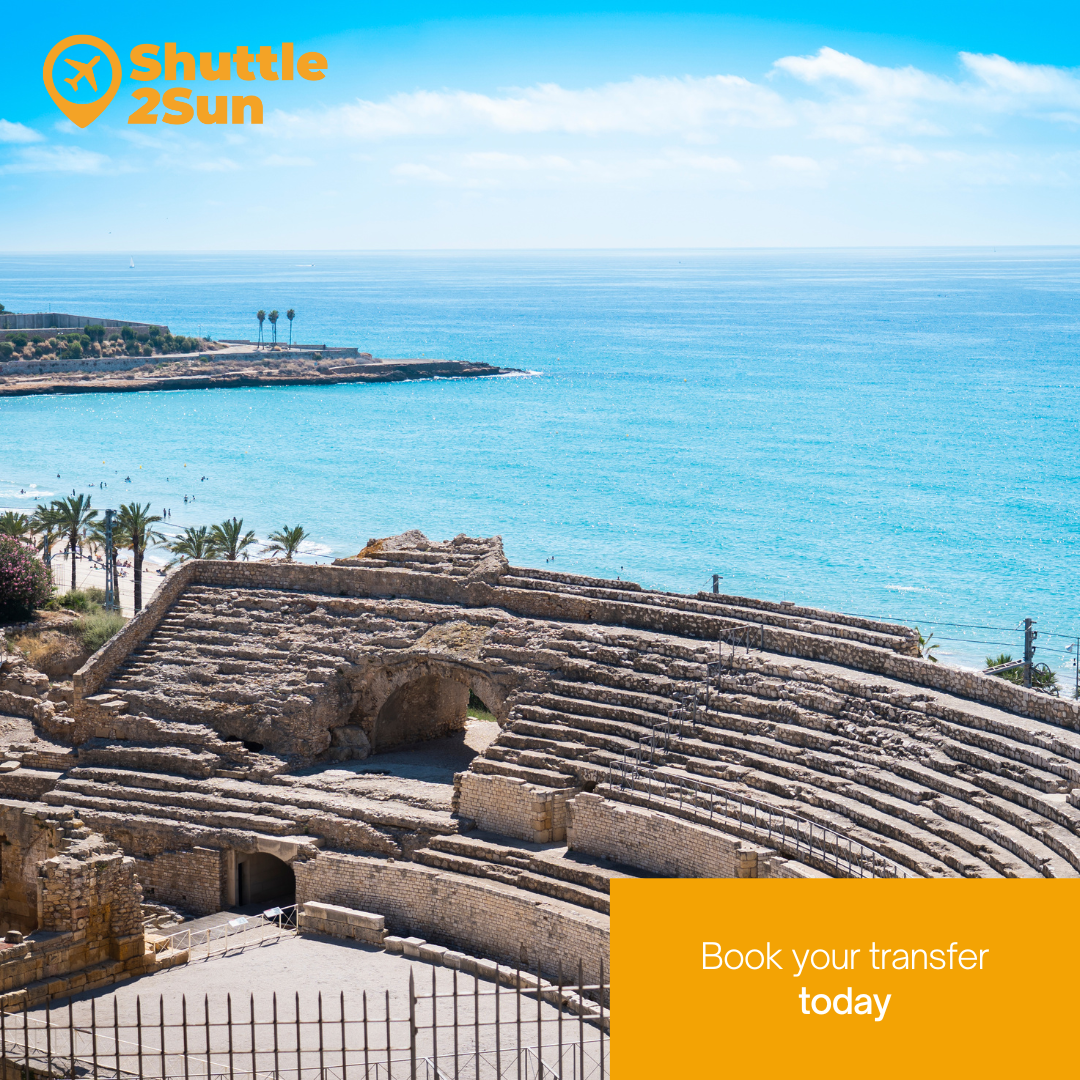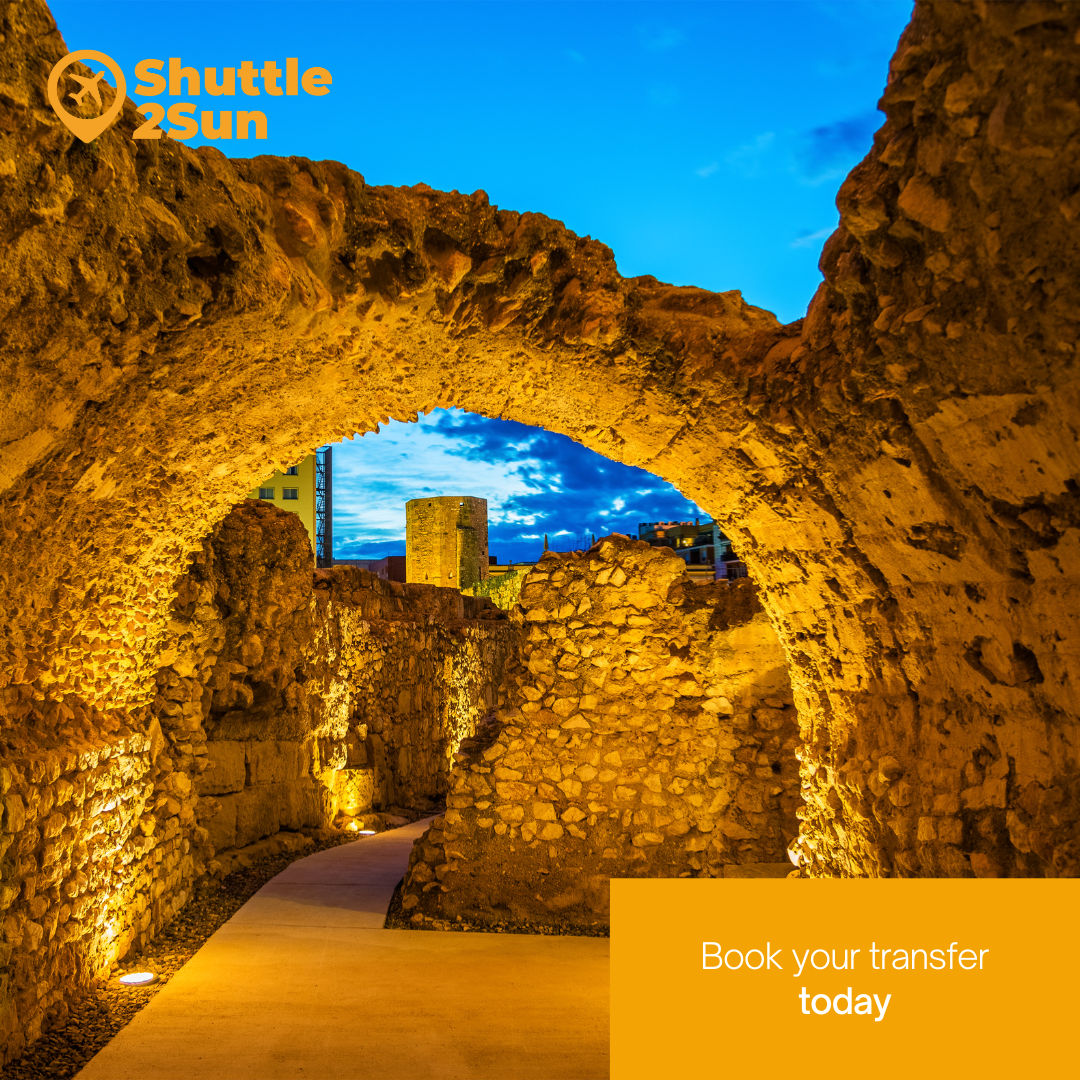One of the historical periods that left the greatest mark on the Catalan coast and that nowadays make it a great tourist attraction was the Roman period. It is very easy to find out how they came to inhabit the area, what their lives were like, how they interacted and what their leisure areas were like if you visit Costa Dorada, especially the city of Tarragona, because all around you will find a great architectural ensemble that will allow you to travel back in time and become a citizen of the ancient Roman Tarraco.
If you want to discover all that Costa Dorada has to offer and dive into the history of the Catalan coast, do not hesitate and travel to its towns. Shuttle2Sun offers its shared transfer services and private transfer services, low-cost and sustainable, so you can travel to any town in the area, from Barcelona airport, Barcelona port, Reus airport, Girona airport and Camp de Tarragona AVE train station.
Roman Tarragona
Before the Roman Empire, the area of Tarragona was inhabited by Iberians, of whom we can find some settlements, especially on the coast, which we will talk about in another publication. With the arrival of the Roman army led by Scipio Africanus in 210 BC, Tarragona became a city allied to the Empire.
It later became known as Colonia Iulia Urbs Triumphalis Tarraco, or simply Tarraco, and became the capital of the province Hispania Citerior Tarraconensis, one of the three that made up Hispania, along with Baetica and Lusitania.
The entire city was surrounded by walls, of which we can still find up to 1,100 metres, out of a total of 3,500 metres.
One of the most emblematic places that stands beside the Mediterranean Sea is the lush Roman amphitheatre, located outside the walled perimeter, built at the beginning of the 2nd century AD. During your visit, you will be able to see part of its stands, which are still preserved, while you can imagine the gladiatorial fights that took place there. It is worth mentioning the presence of the church of Santa María del Milagro inside, which was built later, during the Middle Ages, on the remains of the amphitheatre.
Another of the jewels in the crown is the Roman Circus, built in the 1st century AD, which was used to hold the traditional chariot races.

Next to it is the Praetorium, a tower that connected the residential and commercial area, i.e. the lower part of the city, with the Provincial Forum, an enormous esplanade formed by two different squares surrounded by porticoes, where much of the political and administrative life of the city took place. Nowadays, the area occupied by the forum has been converted into streets and private homes, leaving only some of the porticoes visible, for example in Plaça del Pallol or Plaça del Fòrum.
You can also find the local Forum, where the citizens carried out their personal and commercial life, due to the existence of the basilica, the shops and temples. If you want to visit the remains of this space, you can access through Carrer Lleida.
Remember that Shuttle2Sun offers its shared transfer services and private transfer services, low-cost and sustainable, so you can get to Tarragona from Barcelona airport, Barcelona port, Reus airport, Girona airport and Camp de Tarragona AVE train station.
One of the most important places of leisure in Roman society was the Theatre, a space dedicated to holding shows and recreational plays for the population.
Nor should you miss the Paleochristian necropolis, a cemetery located on the outskirts of the city, where you can find numerous tombs, mausoleums and sarcophagi, as well as the remains of a sanctuary and two basilicas in honour of Saint Fructuosus, who was buried there.
So important is the mark left by the Roman population in the capital of Tarragona that the archaeological site that remains today has been declared a World Heritage Site.

Pont del Diable
Another of the most outstanding elements of the Roman period in the area around Tarraco is Pont del Diable, an aqueduct located next to the Francolí river, which was intended to carry water to the city. If you want to find out how it was built and the legends behind this famous structure, we encourage you to read our article ‘El Pont del Diable in Tarragona and its history’.
The Tower of the Scipios
About six kilometres before entering Tarragona, along Via Augusta, you will find the famous Tower of the Scipios, a funerary monument which, until the 20th century, was believed to have housed the bodies of the Scipio brothers, hence its name.
Discover what houses were like in Roman times
If you want to find out how Romans built their houses, don’t miss a visit to three of the Roman villas you’ll find around Costa Dorada. One of them is Vil·la Romana del Vilarenc, located in Calafell, a building constructed at the end of the 1st century BC, which was used as a country house.
Another is Vil·la Romana de La Llosa, in the municipality of Cambrils, very close to the sea; or Vil·la de Els Munts, in Altafulla, a large luxury house, dedicated to aristocratic society.
Other outstanding places
Finally, we would like to recommend three other sites that should also form part of your route along the Roman Costa Dorada. Firstly, Arc de Barà, a triumphal arch located on Via Augusta, some 20 kilometres from Tarraco. And also the Mèdol Quarry, from where Romans extracted the stone to build the buildings we find in the city. And, on the other hand, the monumental complex of Centcelles, in Constantí, a large building whose main hall is crowned by a magnificent dome with Christian mosaics.
Tarraco Viva
If you want to get to know all these monuments that make up Costa Daurada area, you should make a note in your calendar of an unmissable event: Tarraco Viva, a Roman festival to be held in Tarragona from the 13rd to the 26th of May 2024.
Don’t think twice and dive into the past of Tarragona and Costa Dorada! Remember that Shuttle2Sun offers its shared transfer services and private transfer services, low-cost and sustainable, so you can move to any town in the area, from Barcelona airport, Barcelona port, Reus airport, Girona airport and Camp de Tarragona AVE train station.



